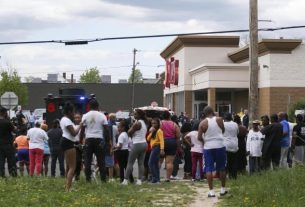One of the most contentious topics in crypto right now is next year’s Bitcoin (BTC) halving. From around May, miners will receive only BTC 6.25 (USD 46,000) as a reward for every block they confirm, and the crypto community is currently at odds over whether the resulting reduction in supply has already been priced in by bitcoin markets.
For the most part, expert traders and commentators believe that the market has already taken the 50% reduction in new bitcoins into account when trading. Investors know that 50% fewer bitcoins will be generated each day from May, so they’ve paid a higher rate in the present than they would have if Bitcoin weren’t halving.
However, a contrary school of thought argues that the halving isn’t really priced in, either not fully or not at all. Some point out that many casual traders of bitcoin aren’t in fact aware of the halving, so haven’t been paying a higher price for a cryptocurrency that will become harder to obtain next year.
Priced In
“We believe the event is mostly priced in. The halving is not an unknown, yet to be discounted into the price, rather a known event the market has been anticipating,” says Joel Kruger, a currency strategist at LMAX Group.
Kruger isn’t the only person who thinks this. Also speaking with Cryptonews.com, cryptocurrency author and analyst Glen Goodman also says that the market must have already been adjusting on the basis of information about the halving.
“The halving is almost certainly already priced into the market because we all know exactly when it’s going to happen and the exact impact on the bitcoin supply,” he says.
“From the moment such an incident is known about, traders account for it, the market price adjusts instantly to reflect that information, and any opportunity to profit from it disappears.”
Of course, it’s hard to pinpoint where or when exactly the price of BTC went up as a result of traders becoming increasingly aware or mindful of the halving. From April 1 to June 26, bitcoin rose by 208%, from USD 4,153 to 12,801, but since then it’s been on a staggered downward trajectory and sits at around USD 7,531.
Nonetheless, this is still 100% higher than the USD 3,757 bitcoin was worth on January 1, so it is arguable that a portion of this rise is the result of traders pricing in next year’s big event.
Not Priced In
On the other hand, there are some who argue that the halving hasn’t been priced in all that much up until now.
Posting on Twitter, the principal at digital asset management firm ARCA, David Nage, wrote:
If you think most outside our sandbox understand the halving you are mistaken…
— David Nage🎯 (@DavidJNage)
There seems to be some evidence to back up Nage’s insinuation that casual traders aren’t actually aware of the halving yet. Looking at Google Trends data for the “bitcoin halving” search term, for instance, you see that searches for the term haven’t come anywhere close to being as popular as they were in July 2016, at the time of the last halving.
In the week between July 3 and 9, 2016, this search term reached a popularity rating of 100, its highest possible score. This year, the highest score it has received is 29, in June.
In other words, the Trends data does show that people have become increasingly aware of the halving this year, but it also suggests that the level of public awareness is nowhere near its maximum.
As such, it’s likely that people will become more aware of the halving as it draws closer, something which Joel Kruger tells Cryptonews.com is a possibility.
“There is some evidence of demand that would emerge in December, approximately 6 months ahead of the halving, if we are to draw on the analog of market behavior in the lead up to the two previous halvings,” he says. “At the same time, drawing on such a small sample size is hardly compelling as a foundation for the basis of future expectations.”
As the example of 2016 suggests, the bitcoin price may not see its most significant jump until the month before the halving. According to CoinMarketCap, the BTC price went from USD 448 on May 25 to USD 762 on June 19.
It then decreased to USD 662 by July 9, the precise date of the halving. However, there was from that point onwards a very steady increase in price for the rest of the year, ending on USD 955 on December 31.
Longer Term Rise?
The fact that the BTC price rose after the 2016 halving is giving traders and holders hope that it will experience similar rises after the halving next year.
“Given the historic price movements following past halvings, technical analysis leads many to believe that the next halving will have a similar impact as previous halvings,” Lou Kerner – a partner a crypto advisory firm CryptoOracle – tells Cryptonews.com.
However, Glen Goodman isn’t so sure that the halving will have a significant impact.
“Firstly, supply is not going to shrink, it will continue to rise, but it will merely rise more slowly than before,” he says. “On the other side of the equation, demand for bitcoin may rise faster than supply, but if it doesn’t rise as fast – or if it shrinks – then there’s no reason to believe the halving would cause the price to rise.”
In either case, a recent survey on Twitter showed that the absolute majority of the respondents think that the halving ‘is rocket fuel’:
The Halving
— Jameson Lopp (@lopp)
@robustus @melikmanukyan @lopp It’s hard to find a random person that knows what bitcoin is as well as what the hal… https://t.co/7308ofIovn
— Brian LaFevre (@BrianLaFevre3)
However, the theory of contrary opinion asserts that if a majority agrees on the direction of a market move, then the odds are significant that prices will move in the opposite direction. The question is, who is this majority and how will it change in the next six months? The countdown has begun.




